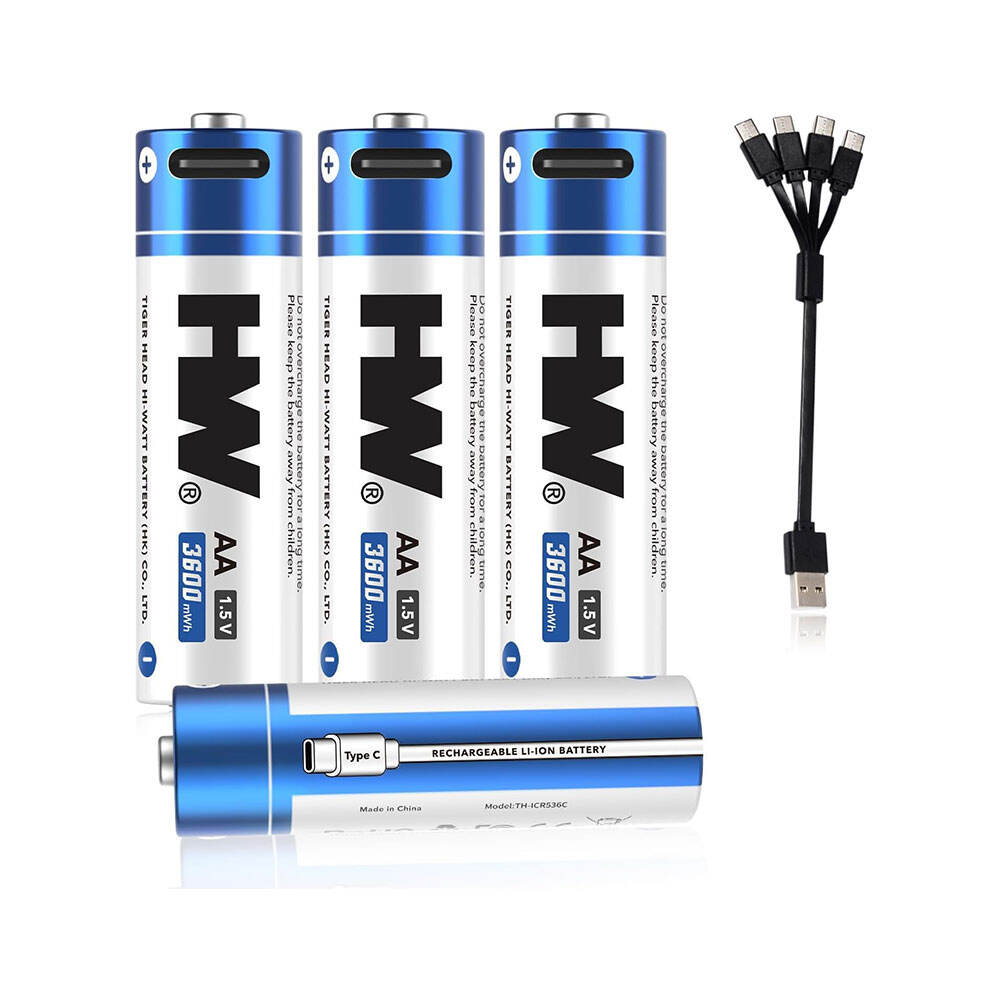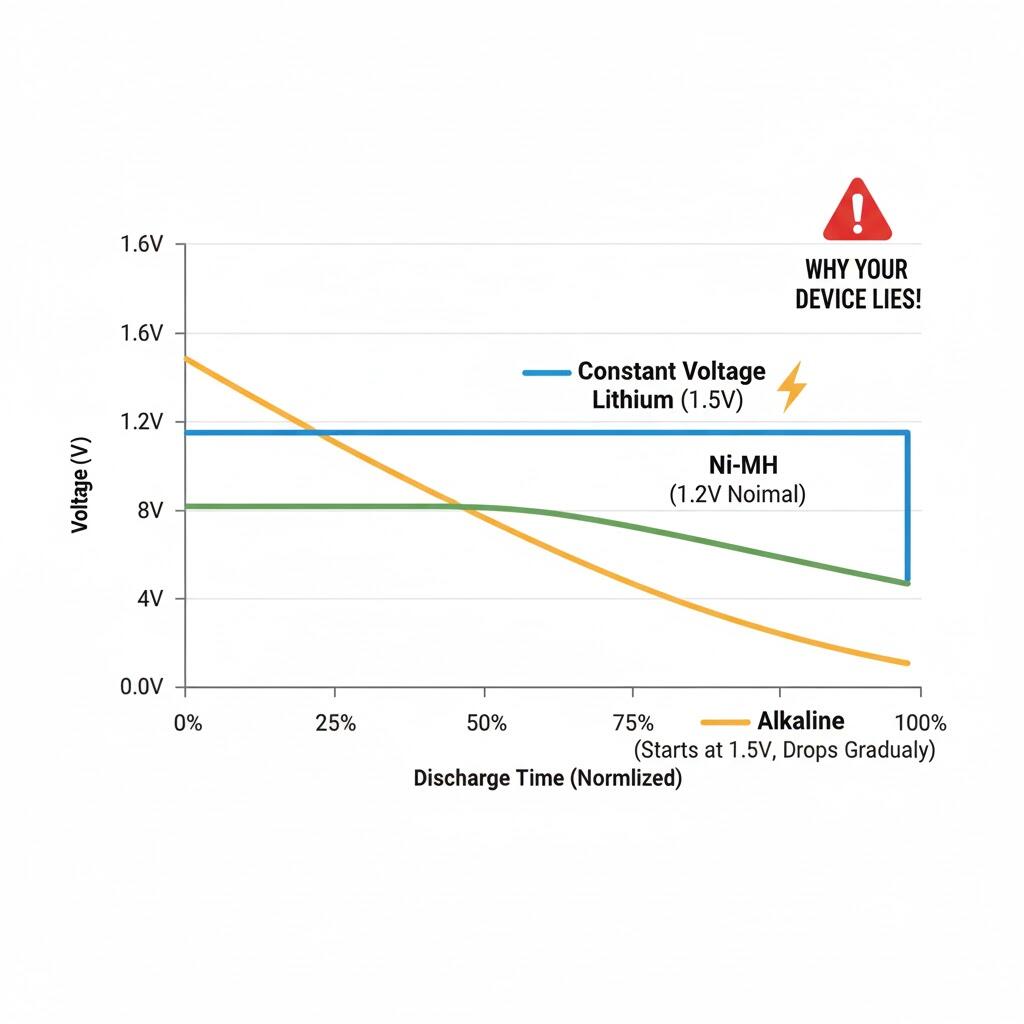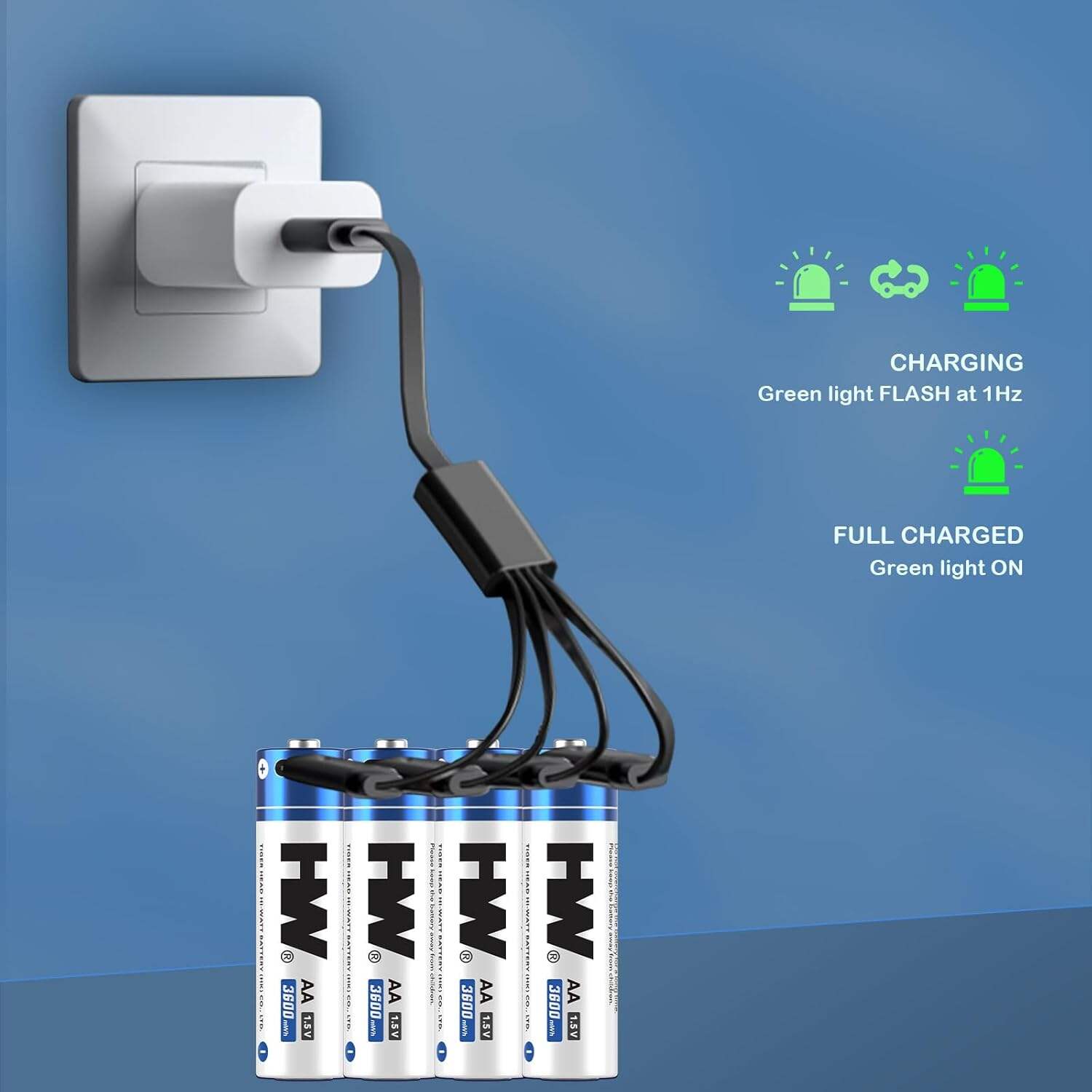You know the drawer I’m talking about. We all have one. It’s that messy kitchen drawer rattling with loose screws, rubber bands, and a graveyard of AA and AAA batteries. You grab two for your TV remote, pray they have some juice left, and... nothing. Dead. It’s frustrating, isn’t it? For decades, we’ve been shackled to single-use alkaline batteries or those ancient, clunky NiMH rechargeables that require a separate, brick-sized wall charger. But technology has finally caught up. Enter the 4-in-1 USB-C Rechargeable Lithium Batteries Pack. It sounds like a mouthful, but it’s actually quite simple: it’s freedom. It’s the convergence of modern charging tech with the most common battery sizes in the world. If you are tired of buying batteries only to throw them away, or if you hate hunting for that specific plastic charger you lost three years ago, pull up a chair. We’re about to change how you power your life.
Imagine if your standard AA battery had a superpower. On the outside, it looks just like the batteries you've used since you were a kid. It fits in your Xbox controller, your wireless mouse, and your kid's noisy toys. But look closer. hidden near the positive terminal (the "button" top) is a tiny, discreet USB-C port. This is where the magic happens.
A "4-in-1 pack" doesn't just refer to the number of batteries in the box. It usually refers to the specialized charging cable that comes with them. Picture a hydra—one USB-A (or USB-C) head that plugs into your wall adapter or laptop, splitting into four separate USB-C connectors. This means you can charge four batteries simultaneously using just one USB port. No more fighting over wall outlets. No more bulky plastic sleds to snap the batteries into. You just plug the cable directly into the battery itself, like you’re charging your phone. It’s sleek, it’s intuitive, and frankly, it makes you wonder why we didn’t think of this sooner.

You might be thinking, "Okay, the plug is cool, but is the battery actually good?" The answer lies in the chemistry. Most old-school rechargeable batteries use Nickel-Metal Hydride (NiMH). While they are decent, they have a fatal flaw: voltage drop.
Here is the techy bit, but I promise to keep it simple. A standard single-use Alkaline AA starts at 1.5 Volts but quickly drops as you use it. That’s why your flashlight gets dimmer and dimmer before it dies. NiMH rechargeables (the old kind) usually max out at 1.2 Volts. Some high-drain devices (like VR controllers or digital cameras) look at that 1.2V and think the battery is already half-dead, refusing to work properly. Lithium-ion batteries are different. They naturally operate at a higher voltage (around 3.7V), but these smart USB-C batteries have a tiny regulator chip built inside them that steps the voltage down to a perfect, constant 1.5 Volts. Think of it like a runner. Alkaline batteries are sprinters who get tired and slow down. NiMH are joggers who start slow. Lithium USB-C batteries are marathon runners who maintain the exact same sprint speed from the first mile to the last, only stopping when they cross the finish line. Your device gets full power 100% of the time until the battery needs a recharge.

Nobody likes waiting. Old NiMH chargers can take anywhere from 4 to 8 hours to charge a set of batteries. It’s like watching paint dry. Because of the efficient lithium chemistry and the direct USB-C input, these new 4-in-1 packs often charge in 1.5 to 2 hours. You plug them in, go grab lunch, and by the time you’re back, you’re ready to game for another 20 hours.

Still on the fence? Let’s break down the "Why" into bite-sized pieces.
This is the biggest selling point. If you travel, camp, or just hate clutter, this is for you. You don't need to pack a special battery charger. If you have a phone charger, a laptop port, or a power bank, you can charge these batteries. The 4-in-1 splitter cable usually included means you can top up a whole set off a single power bank while hiking. Try doing that with a traditional wall charger!
Let’s do some napkin math. A quality pack of USB-C rechargeable lithium batteries might cost $20-$30. A pack of premium disposable alkalines might cost $15. But here is the kicker: that lithium battery can be recharged 1,000+ times. To get the same energy from disposables, you’d have to buy thousands of batteries, costing you thousands of dollars over the years. It’s an investment that pays for itself in a few months.
Every year, billions (yes, with a B) of disposable batteries end up in landfills, leaking toxic chemicals into the soil. By switching to a rechargeable system, you are single-handedly keeping hundreds of metal casings out of the trash. It’s a small switch for you, but a massive win for the planet. Plus, lithium is generally less toxic than the heavy metals found in some older battery types.
We’ve all lost a remote control to a leaky alkaline battery that corroded the springs. Alkaline batteries leak because the chemical reaction releases gas that ruptures the seal. Lithium batteries don't have this issue in the same way. They are sealed, stable, and much safer for your expensive electronics.
Xbox and other controllers are notorious battery hogs. With a constant 1.5V output, your controller won't disconnect randomly or lag when the vibration motor kicks in. Photographers: Camera flashes recycle faster with the high current capability of lithium. Smart Home: Smart locks and thermostats often require strong, steady voltage to move gears and stay connected to Wi-Fi. NiMH batteries often fail here; Lithium thrives. Travelers: One cable charges your phone, your headphones, and now your flashlight batteries. Simplicity at its finest.
While these batteries are robust, they aren't invincible. To keep them running for years, keep these tips in mind: Don't Overheat Them: Like your phone, lithium batteries hate extreme heat. Don't leave them charging on a car dashboard in the summer. Storage: If you aren't going to use them for a few months, charge them to about 50-60%. Storing lithium batteries at 0% or 100% for long periods stresses the chemistry. Use the Included Cable: While any USB-C cable fits, the 4-in-1 cable is designed to manage the current flow for multiple cells. It's your best bet for a balanced charge.
Look, change is hard. We are creatures of habit, and grabbing a pack of disposables at the grocery store checkout is easy. But it’s a false economy. The 4-in-1 USB-C Rechargeable Lithium Batteries Pack represents a shift toward smarter, cleaner, and more efficient energy. They last longer, charge faster, weigh less, and provide better performance for your high-tech gadgets. So, ask yourself: Do you want to keep feeding the landfill and buying batteries every month? Or do you want to buy one pack, plug it in like your smartphone, and forget about power problems for the next three years? The choice seems pretty electric to me.
 Hot News
Hot News2025-11-24
2025-10-31
2025-10-19
2025-10-24
2025-02-10
2024-12-12